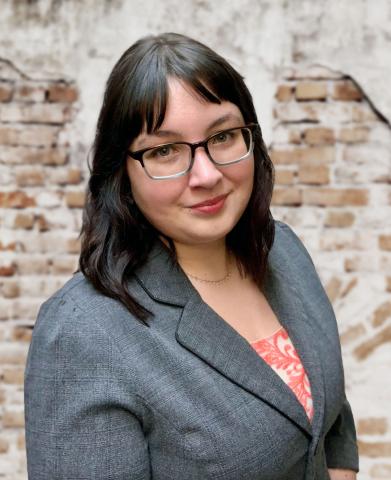Pronouns: she/her/her
I earned my BA in Classics at the University of Notre Dame in 2015, and an MA in Classics with a Roman Archaeology concentration from Texas Tech University in 2018. My MA thesis explored the presence and social implications of Roman metal keys at the Gabii Project excavations (Gabii, Italy) (https://sites.lsa.umich.edu/gabiiproject/).
My research interests are focused on the technical, spatial, and social applications of decorative iconography, in particular the relationships between different artistic media (wall plaster versus floor mosaics, etc.), as well as the technical methods of ancient restoration work and their resulting social and spatial messaging. I am also trained to process a variety of material finds, making me something of a jack-of-all-trades, rather than a specific object specialist. This allows me to go where I am needed in an excavation, and I often work on a range of materials, including ceramics, metals, plasters, and glass.
I excavated at Butrint, Albania in 2012, and in 2017 I participated in the Gabii Project excavations as a student. Since 2020, I have been involved behind the scenes with Gabii Project database management and object research. Sine 2022, I have served as a staff member in the finds labs for both the Gabii Project and the Venus Pompeiana Project (Pompeii, Italy), where I processed a range of excavated finds and helped instruct students on the methodologies of doing so (https://www.archaeological.org/interactive-dig/pompeii-italy/).
My dissertation investigates ancient philological restorations in elite domestic contexts at Pompeii and Herculaneum. The goal is to understand not just how the repairs were done on a technical level, but how they interact with the rest of the decorative program in a space, and what they are then expressing on a social level (with all of the necessary caveats needed for such evaluation). I utilize methods like GIS for the collection, analysis, and visualization of such archaeological data in the field, and in 2022 I was given the American Friends of Herculaneum Graduate Award that allowed me to conduct GIS data gathering in the field. I hope to further incorporate portable XRF and Raman spectroscopy technologies into my research, as this will allow me to gather chemical information regarding the paint and plaster compositions of ancient repairs.
I am also currently the Secretary/Treasurer of the AIA Central Missouri Society.
Proffitt, B. under review. “Reimagining Female Property Ownership in the Later Empire: a case study of a Roman Ring Key at Gabii,” in Gabii through its Artifacts, L. Banducci and M. D'Acri, eds., Archaeopress.
Proffitt, B. (translation). 2022. “Appendix: Coins Catalogue,” in “Archaeological Research at the Sanctuary of Venus in Pompeii: Interim Report of the 2018-2019 Seasons of the Venus Pompeiana Project.”, Mogetta, M. et al. Fasti Online Documents & Research 535: 1-41.
Proffitt, B. 2021. Special Finds Entry Author for A Cemetery and Quarry from Imperial Gabii (The Gabii Project Reports, 2), L. Banducci and A. Gallone (eds.), University of Michigan Press.
Proffitt, B. 2021. “Seat of Power: The Afterlife of the Achaemenid Throne on Minted Coinage.” Chronika, vol. 11: 1-19.
Proffitt, B. 2016. “The Man Who Would Be King: The Prophetic Iconography of Lysimachus’ Post-Ipsus Tetradrachms.” University of Notre Dame Journal of Undergraduate Research, vol. 3, no. 1: 2–52.
